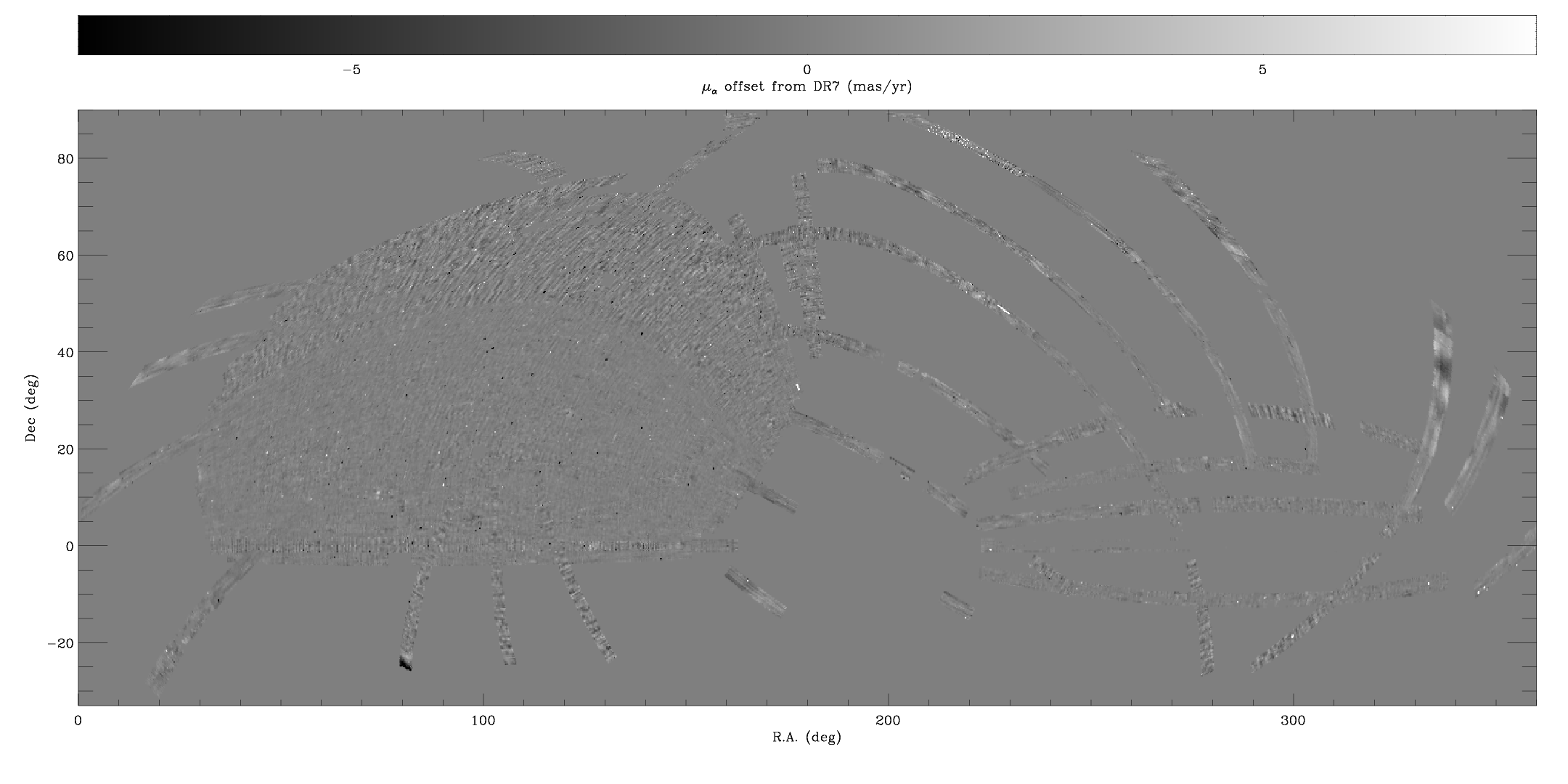


They are no longer used for this purpose soon after SDSS operations started, the UCAC catalog of astrometric standards faint enough not to be saturated in the main SDSS chips became available. These bright star positions were necessary to match to objects present in astrometric catalogs used by the Astrom pipeline. Because they are smaller chips, the effective exposure time is only 11 seconds, allowing the survey to observe brighter stars without saturation. Astrometric Chip The SDSS camera contains 24 2048×400 pixel CCDs (in addition to the 30 2048×2048 photometric CCDs) which were used for astrometry and focus monitoring. The detailed workings of this pipeline are described in the Astrometry section of the algorithms pages, or the Pier et al. Astrom The data processing pipeline that maps CCD pixel coordinates to celestial coordinates. AstroDA The data acquisition and analysis system used to collect data from the survey telescope cameras. It transforms frame (row,col) coordinates to great circle (μ,ν) coordinates for a given inclination. ASPCAP The APOGEE Stellar Parameters and Chemical Abundances Pipeline (ASPCAP) asTrans file FITS binary table with astrometric transformations for every field in a single imaging run. Details can be found in the Photometry section of the Algorithms pages, or the Lupton et al. The transformation from linear flux measurements to asinh magnitudes is designed to be virtually identical to the standard astronomical magnitude at high signal-to-noise ratio, but to switch over to linear behavior at low S/N and even at negative values of flux, where the logarithm in the Pogson magnitude fails. Asinh Magnitude Magnitudes within SDSS-I/II are expressed as inverse hyperbolic sine (or “asinh”) magnitudes, sometimes referred to informally as luptitudes. Members include the University of Washington New Mexico State University The University of Chicago, Princeton University Johns Hopkins University the University of Virginia the University of Colorado the Institute for Advanced Study. The pipeline is described in the ASPCAP pages of the Infrared Spectra documentation.
#SDSS ASTROMETRY ONLINE SOFTWARE#
APOGEE Stellar Parameters and Chemical Abundances Pipeline (ASPCAP) The software pipeline used by APOGEE to calculate basic stellar parameters (T eff, log(g),, ) and other elemental abundances (Garcia Pérez et al., in prep.). The first data from APOGEE was released publicly in Data Release 10. The spectrograph saw first light in 2011, and the survey will observe roughly 100,000 stars, mostly in the disk of the Milky Way, to obtain detailed chemical compositions and kinematics. This is using a high-resolution (R~22,500) H-band spectrograph fed by 300 fibers. APOGEE The Apache Point Observatory Galactic Evolution Experiment, one of four surveys included in SDSS-III. This is the location of the 2.5m SDSS telescope as well as the Photometric Telescope (PT), as well as other non-SDSS telescopes, such as the ARC 3.5m telescope. APO Apache Point Observatory, located in Sunspot, New Mexico. The algorithm is described in Yèche et al. It is one of the techniques used in the BONUS quasar sample. ANNZ A neural network technique for selecting quasars for spectroscopy in the BOSS survey.
#SDSS ASTROMETRY ONLINE FULL#
A full list of the target flags may be found in the descriptions of ANCILLARY_TARGET1 and ANCILLARY_TARGET2. These additional targets are referred to as BOSS Ancillary Targets. However, a small fraction of the fibers are devoted to a variety of additional projects, ranging from studies of variable stars to host galaxies of supernovae. Ancillary Target (BOSS) Spectroscopic target selection in BOSS is dominated by two categories: LRGs, and quasars. The ancillary programs are described in the APOGEE Ancillary Targets pages. The target flags associated with APOGEE ancillary programs are part of the APOGEE_TARGET1 bitmask. Ancillary Target (APOGEE) Target observed as part of an APOGEE ancillary program to utilize the survey’s capabilities for interesting science beyond its primary survey goals. The Sloan Foundation has continued to be a major supporter of all three phases of the SDSS. An early award from the Sloan Foundation was recognized by naming the survey the Sloan Digital Sky Survey. Sloan Foundation A philanthropic nonprofit institution (established in 1934 by Alfred Pritchard Sloan, Jr., then President and Chief Executive Officer of the General Motors Corporation. See the Adaptive Moments section of the algorithms pages. These moments are close to optimal for measuring the shapes of faint galaxies, and have been used for weak lensing studies. Adaptive Moments A method of measuring object shapes ( i.e., fitting those shapes to ellipses).


 0 kommentar(er)
0 kommentar(er)
